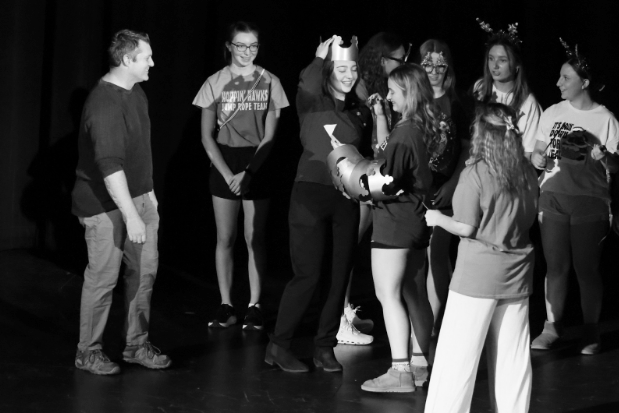Flat Earth conspiracy challenges scientists Theory believes in disk shape instead of common globe shape
March 22, 2022
The Flat Earth Theory is a conspiracy theory that Earth is the shape of a disk with an Artic circle in the middle with land masses surrounding it or that Antarctica goes on forever making Earth an infinite plane in all directions.
It is common for the flat earth theory and society of believers to be openly mocked and shamed for their beliefs about the Earth’s shape. Some contribute to the society simply because they enjoy the intellectual pursuit of arguing a position that has been extensively proved false. Others are completely serious in their beliefs and will fight tooth and nail to prove a point by throwing continuous evidence. According to a podcast from Scientific American it’s a schism, people are having fun and know the world isn’t flat but enjoy the pursuit of debating.
Junior Cameron Nall describes the world as definitely being round because, “if you look at the horizon line you can see the earth getting round when the sun goes down, and when we go to space, we can see that it’s a sphere.” Charles K. Johnson, the president of the International Flat Earth Research Society disputes the previous statement by mentioning, “you can’t orbit a flat earth; the Space Shuttle is a joke.”
According to NASA, in May 1931 a photograph was taken from an airplane near the Andes Mountain range, and it first proved the curvature of Earth through the horizon lines in the photograph. Nicole Nguyen, a substitute teacher at North Harford supports this by describing the Earth as an “obvious oblate spheroid.”
Mapping software and the ability to use GPS and other location tools further disprove the phenomenon that the Earth is flat. Freshman Joshua Steltzer adds, “as a part of my geographic information system (GIS) class the flat earth theory fails to explain the errors in our maps through the distances that aren’t correct. The Earth being a Spheroid explains the reasons our maps aren’t completely accurate.”
Conspiracy theories are widely accepted as beliefs to a large population of people, a major component of these theories is the ability to spread beliefs across social media like YouTube and Twitter. Researchers from the University of Malta have confirmed there is evidence to suggest that the world is flat, according to Think Magazine. This theory expands to more than just common people, researchers from more than 50 universities around the world have worked towards proving or disproving this theory with scientific evidence.











